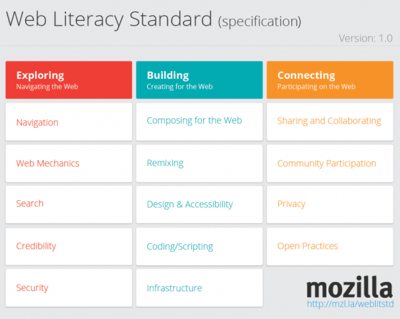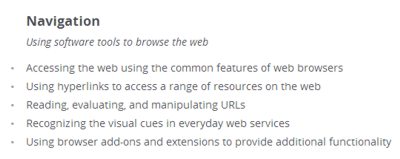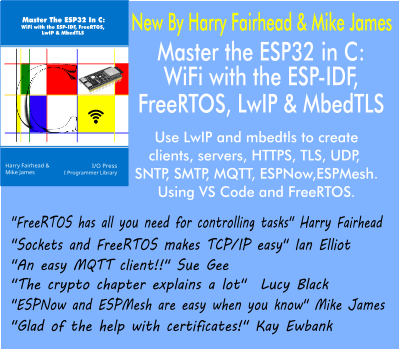| Mozilla Web Literacy Standard V1.0 Launched |
| Written by Sue Gee | |||
| Tuesday, 29 October 2013 | |||
|
Mozilla's Web Literacy Standard, a specification for the skills and competencies people need to read, write and participate effectively on the web, was unveiled at last week's Mozilla Festival and is now live on Webmaker.org. Mozilla wants to create a generation of webmakers - those who can not only elegantly consume but also write and participate on the web. Its Web Literacy Standard has gone from being a white paper just a year ago to Version 1.0 of a specification of the competencies and skills that Mozilla and its community of stakeholders think are necessary to making an active contribution to the web as well as making efficient use of web resources. The specification is presented in a grid, with each of its three strands, Exploring, Building, Connecting, in the columns and the associated competencies in the rows.
(click in grid for larger version)
On Webmaker.org clicking on the cells reveals the list of skills that make up a competency. For example:
In his blog post announcing the availability of the specification, Doug Belshaw, co-owner of the standard with Carla Casilli, suggested three things that its supporters should now do with it:
More InformationWeb Literacy Standard (specification) on Webmaker.org Announcing the Web Literacy Standard (Specification)
Related ArticlesMozilla's Vision for Web Literacy Mozilla Open Badges API in Beta Learners Earn Open Badges from Mozilla
To be informed about new articles on I Programmer, install the I Programmer Toolbar, subscribe to the RSS feed, follow us on, Twitter, Facebook, Google+ or Linkedin, or sign up for our weekly newsletter.
Comments
or email your comment to: comments@i-programmer.info
|
|||
| Last Updated ( Tuesday, 29 October 2013 ) |



